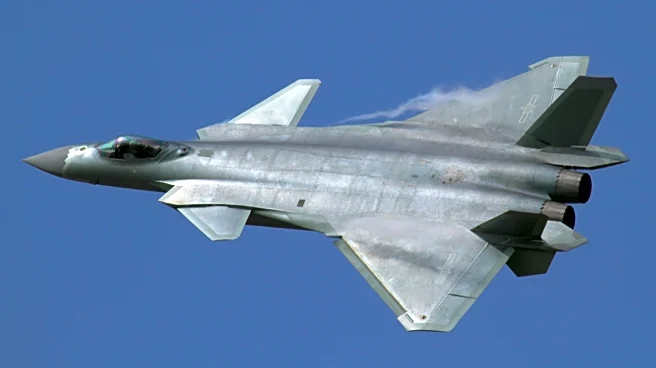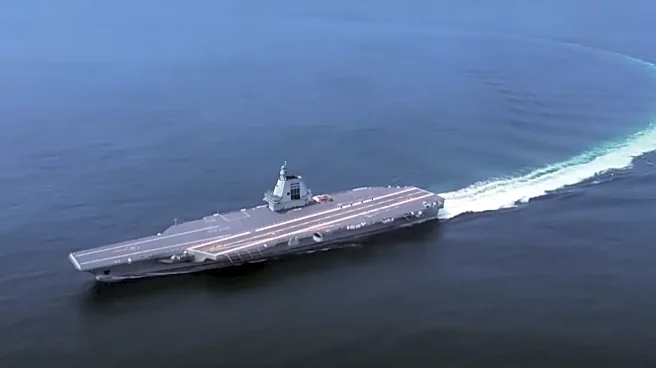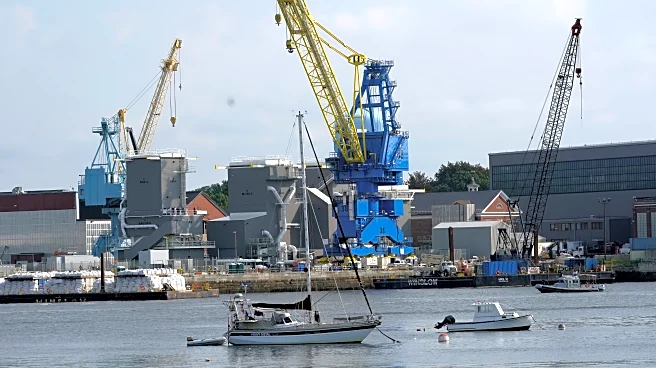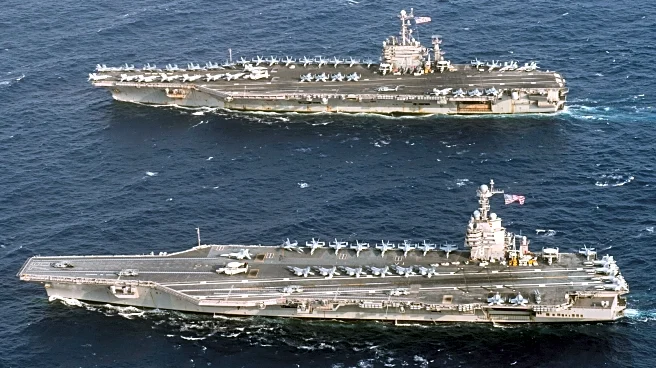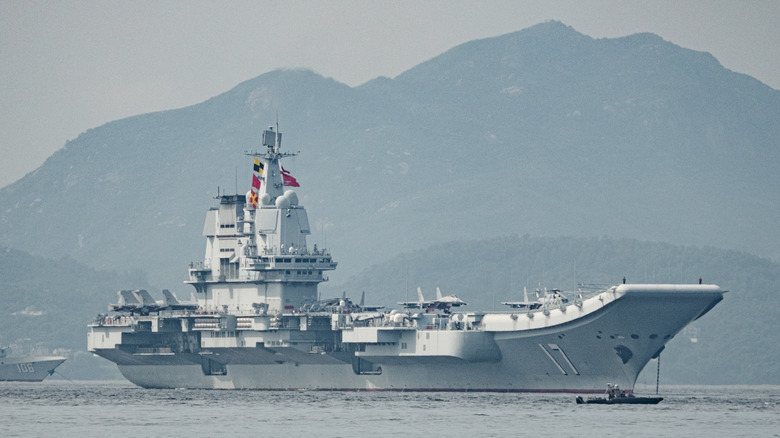
China's People's Liberation Army Navy (PLAN) is now considered to be the largest naval fleet on the planet. In 2024, some eerie figures surrounding China's naval fleet were released in a report by the U.S. Department of Defense, estimating that China has more than 370 warships and submarines in service today. And they're not planning on slowing down either. Projections reveal some scary numbers, with estimates they'll hit 395 by the end of this year and 435 come 2030. Another credible source, the Center
for Strategic and International Studies, says the figure is much lower at around 234 vessels, but this could be due to the omission of certain types of vessels. These figures are also estimates, as Beijing guards such information very closely.
What is not disputed, however, is the immense growth of the fleet. It was only two decades ago that PLAN's capabilities were confined to China's shorelines, consisting of modest frigates and patrol crafts. Now, they've upgraded their roster considerably, with modern destroyers, massive aircraft carriers, and advanced nuclear submarines like the Type 094. This progression is a statement from China, showcasing its intent to shape the seas far beyond its own shores.
This intent is backed up by the distant waters China now frequents, with warships turning up in the Indian Ocean and a constant anti-piracy presence off the Horn of Africa. The expansion can all be credited to China's colossal shipbuilding industry, capable of churning out modern warships at a speed unmatched by any other nation in the world.
Read more: 10 Largest Air Forces In The World, Ranked By Military Aircraft Numbers
Inside China's PLAN
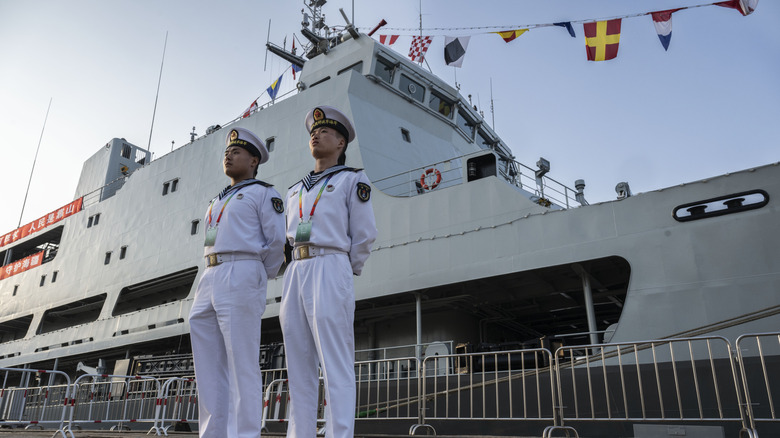
If there's a symbol of China's maritime ambitions, it's the aircraft carrier. The Liaoning and Shandong, which were both adapted from a Cold War Soviet blueprint, have been joined by the far more advanced and "unsinkable" Fujian aircraft carrier. Expected to enter service in 2025, Fujian is fitted with an electromagnetic catapult system similar to the U.S. Navy's newest Ford-class carriers. That technology lets it launch heavier aircraft more efficiently, extending China's ability to project power well beyond its shores.
Beneath the waves, the PLAN's submarine fleet is expanding just as aggressively. By mid-decade, Beijing aims for 65 boats, climbing to 80 by 2035. Among them are six nuclear-powered ballistic missile submarines, alongside both nuclear and diesel attack subs. These vessels are becoming quieter, more capable, and harder to track, complicating the job of any navy that might face them.
On the surface, China's fleet has over 140 major combatants, with many of those bristling with modern technology like vertical launch cells for advanced missiles. When it comes to raw firepower, though, the U.S. still trumps PLAN, although the gap is shrinking at an alarming rate. Analysts predict that China could overtake America's launcher count by 2027, an achievement that could dramatically alter the missile balance in the Indo-Pacific.
Should The U.S. Be Worried?
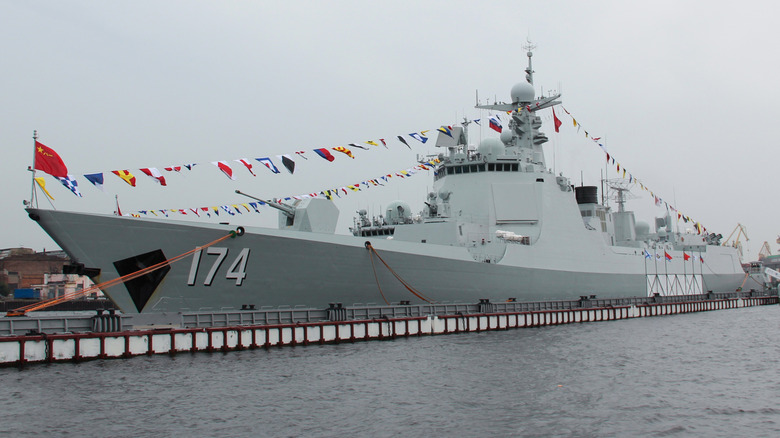
Opinions are split on whether these trends mark the start of a new naval order. Those who see a looming threat point to the speed of China's buildup, the steady rise in tonnage, and the PLAN's leap in training and sophistication. Add in new carriers, a revitalized submarine arm, and missile capacity on track to surpass the U.S., and Beijing suddenly looks far more formidable in its home region.
Others aren't convinced the crown is changing hands anytime soon. The U.S. Navy still sails larger, more versatile ships with greater endurance, operates far more carrier-based aircraft, and holds a qualitative edge in nuclear-powered submarines. It's important to consider that many of the vessels boosting China's numbers are smaller corvettes designed for coastal patrols and regional altercations but are not suitable for the global deployments America undertakes with ease. But with the growing number of aircraft carriers China has, the picture will change fast.
When it comes down to it, dominance at sea does not solely come down to how many ships you have. Many things shape the outcome -- technology, battle experience, and location. Washington's global reach, combat experience, and ally network keep it ahead, for now. Given how rapidly PLAN is growing every year, that lead isn't something the U.S. should take for granted.
Want the latest in tech and auto trends? Subscribe to our free newsletter for the latest headlines, expert guides, and how-to tips, one email at a time.
Read the original article on SlashGear.


